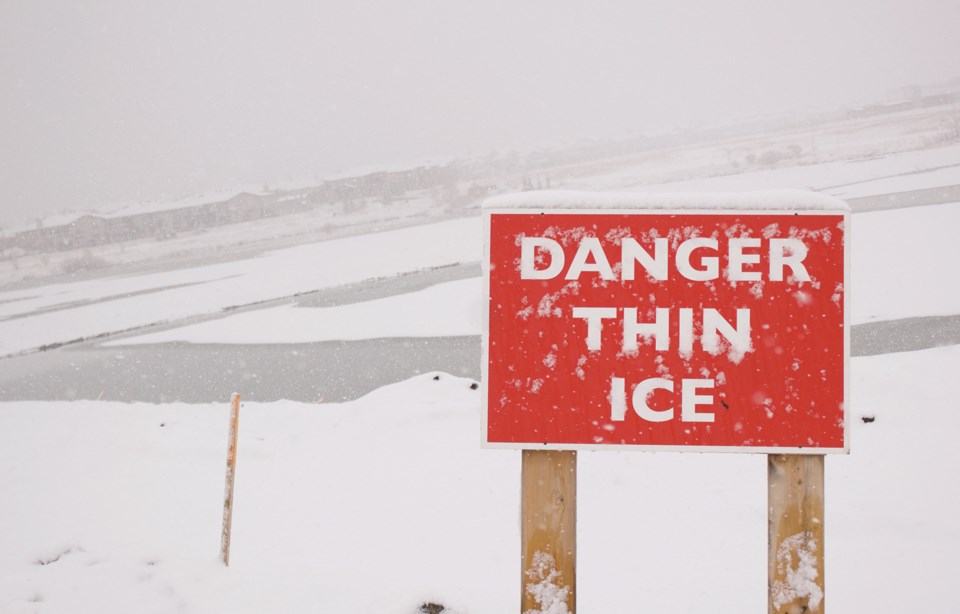With recent temperature fluctuations throughout Rocky View County, it is important to ensure safety is exercised around any natural ice that may form as the weather gets colder.
According to Kevin Paes, manager of Swimming and Water Safety-Training Partner Development with the Canadian Red Cross, the organization often sees people on unsafe ice, simply because fun-seekers don’t know better.
“It’s really important for parents to educate their kids, and for everyone to be aware of ice conditions in their community,” he said.
Ice safety is a serious topic, Paes said, and the consequence of falling through thin ice can be dire.
“In Canada, it’s cold, and hypothermia can set in quickly,” he said. “It’s really important to check the ice thickness [and] know the conditions so an incident doesn’t happen.”
According to Paes, ice should be at least 15 centimetres thick for a single skater, 20 for multiple skaters, and 25 for snowmobiling.
One indication of ice thickness, he said, is colour. Clear, blue ice is strongest, while white, opaque ice is half as strong as blue ice. Grey ice is unsafe, he said, and indicates the presence of water.
Several factors affect how quickly water freezes, Paes said, including the depth and size of the body of water, whether it is moving or still, and whether there are chemicals, silt or salt in the water. Objects in the water – such as logs, rocks and docks – absorb heat from the sun and can weaken surrounding ice.
Paes has a few safety tips for those who head out on natural ice this winter, foremost of which is to always supervise children. Additionally, avoid going out on ice at night, he added, and always go skating with a partner who can help in the case of an emergency. In remote rural areas, it is especially important not to skate alone, as help may be much further away.
“We don’t recommend people ever go onto the water by themselves, because if something does happen, then it’s more difficult to get help,” he said.
If someone does falls through the ice, its imperative they try to remain calm, Paes said. Resist the urge to climb back out where you fell in, as the ice is weak in that area. Instead, face toward shore, where ice is more stable, and reach forward onto the broken ice without pushing down and kick your legs to get your body horizontal. Continue kicking your legs and crawl onto the ice. Once out of the water, he said, don’t stand up – roll or crawl toward shore with your arms and legs spread out as far as possible in order to distribute your body weight.
“If you stand up, chances are high that you’ll break through again,” Paes said.
Anyone who witnesses a person fall through ice should call for help immediately, he said, adding if you are able to extend a pole or branch to the person, you may try to pull them out, ensuring you lie down and extend the pole to the person in the water – the person should kick while you pull. The safest place to perform a rescue is from shore.
“[Witnesses] really shouldn’t be going onto the ice, because you don’t know how thick it is,” Paes said.



